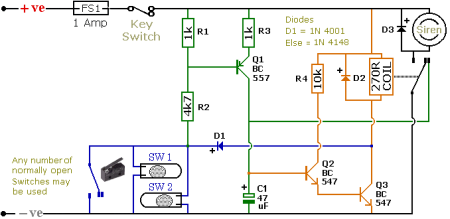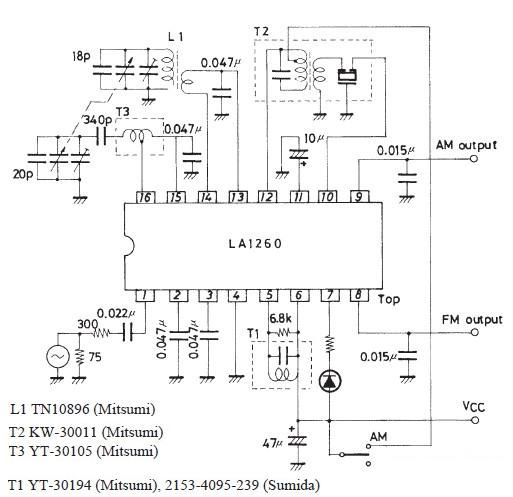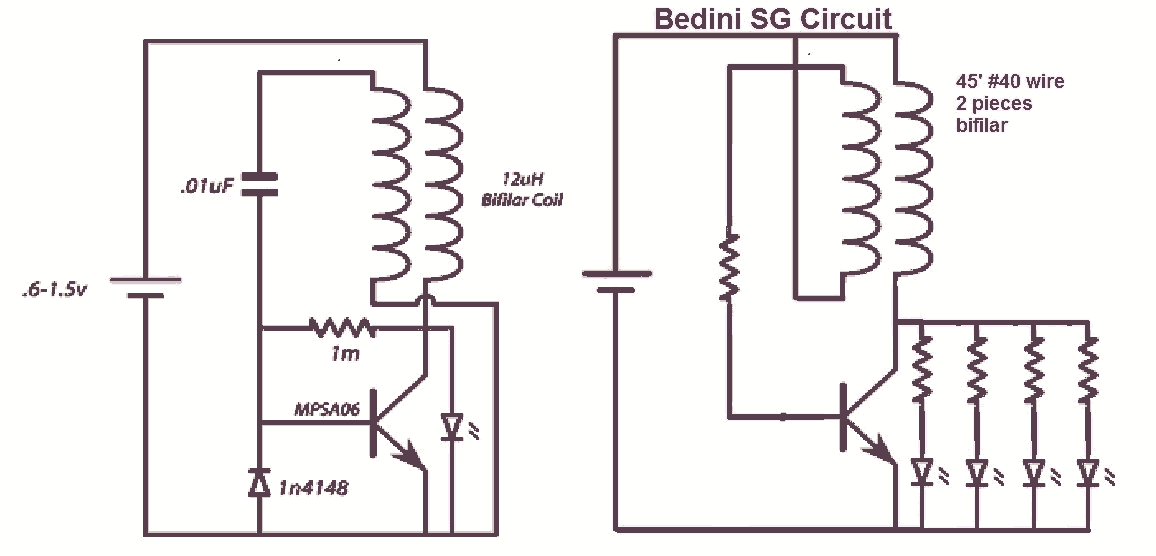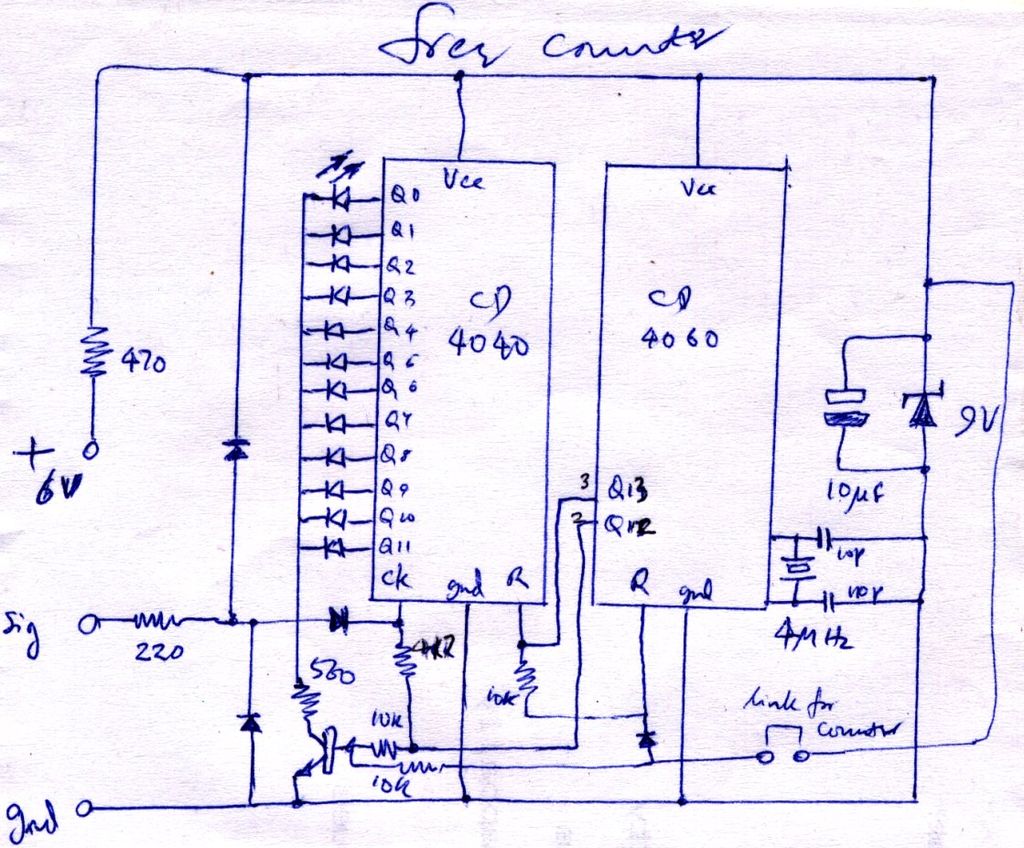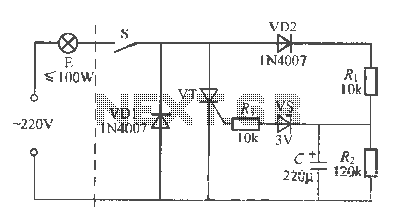
1750M Transverter Circuit
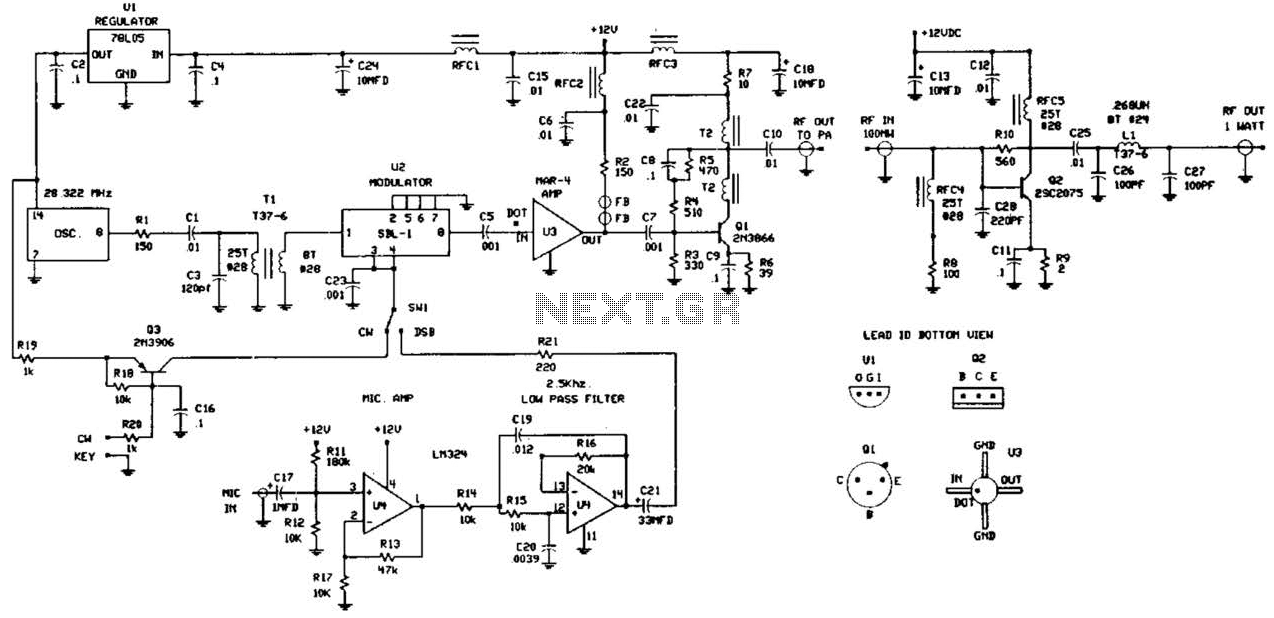
This circuit was detailed in a recent edition of an amateur radio magazine. It enables operation in the 160 to 190 kHz band with a maximum power output of 1 W (license-free) in various modes such as CW, SSB, and FM. The circuit comprises a receiving converter that operates within the 5 kHz to 450 kHz range and a transmitting converter that shifts the 3.66 to 3.69 MHz (80 meter) range down to 160 to 190 kHz. A power supply ranging from 12 to 24 V can be utilized.
The circuit is designed to facilitate amateur radio communication within the specified frequency band while adhering to regulatory power limits. The receiving converter is crucial for capturing signals in the lower frequency range and converting them to a more manageable frequency for processing. This allows for effective demodulation and audio output, enabling clear reception of incoming signals.
The transmitting converter is responsible for taking the signals from the 80-meter band and translating them down into the 160 to 190 kHz range. This conversion process is essential for ensuring that the transmitted signals fall within the legal operating frequency range, allowing for seamless communication without interference.
The power supply requirement of 12 to 24 V provides flexibility in the choice of power sources, accommodating both portable and stationary setups. This versatility is beneficial for amateur radio operators who may wish to operate in different environments or under varying conditions.
Overall, the circuit presents a practical solution for amateur radio enthusiasts looking to explore the lower frequency bands, providing a robust platform for experimentation and communication in the specified frequency range. This circuit was described in a recent edition of an amateur radio magazine. It allows operation in the 160- to 190-kHz band with up to 1 W (license free) in any mode (CW/SSB/FM, etc.) It consists of a receiving converter for 5 kHz to 450 kHz and a transmitting converter to convert the 3.66- to 3.69-MHz (80 meter) range to 160 to 190 kHz. A 12- to 24-V power supply can be used. 🔗 External reference
The circuit is designed to facilitate amateur radio communication within the specified frequency band while adhering to regulatory power limits. The receiving converter is crucial for capturing signals in the lower frequency range and converting them to a more manageable frequency for processing. This allows for effective demodulation and audio output, enabling clear reception of incoming signals.
The transmitting converter is responsible for taking the signals from the 80-meter band and translating them down into the 160 to 190 kHz range. This conversion process is essential for ensuring that the transmitted signals fall within the legal operating frequency range, allowing for seamless communication without interference.
The power supply requirement of 12 to 24 V provides flexibility in the choice of power sources, accommodating both portable and stationary setups. This versatility is beneficial for amateur radio operators who may wish to operate in different environments or under varying conditions.
Overall, the circuit presents a practical solution for amateur radio enthusiasts looking to explore the lower frequency bands, providing a robust platform for experimentation and communication in the specified frequency range. This circuit was described in a recent edition of an amateur radio magazine. It allows operation in the 160- to 190-kHz band with up to 1 W (license free) in any mode (CW/SSB/FM, etc.) It consists of a receiving converter for 5 kHz to 450 kHz and a transmitting converter to convert the 3.66- to 3.69-MHz (80 meter) range to 160 to 190 kHz. A 12- to 24-V power supply can be used. 🔗 External reference
Warning: include(partials/cookie-banner.php): Failed to open stream: Permission denied in /var/www/html/nextgr/view-circuit.php on line 713
Warning: include(): Failed opening 'partials/cookie-banner.php' for inclusion (include_path='.:/usr/share/php') in /var/www/html/nextgr/view-circuit.php on line 713
